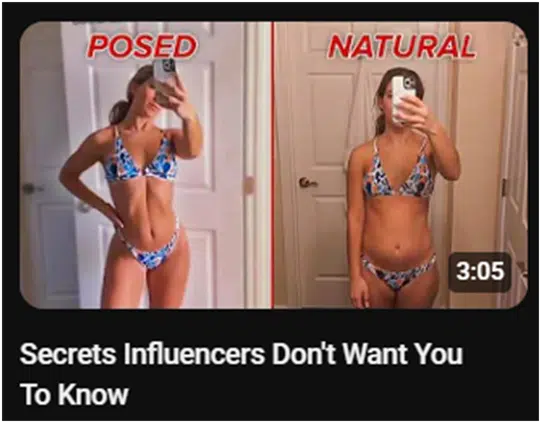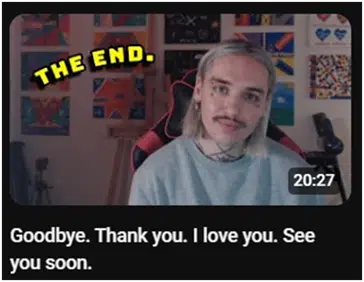In the world of YouTube, attracting clicks is an art form. One of the most effective tools for drawing in viewers is clickbait—a strategy that combines eye-catching thumbnails and compelling titles to pique curiosity. While the term “clickbait” often carries negative connotations, it’s not inherently bad. When done right, it can significantly boost your video’s visibility without alienating your audience.
Let’s dive into the nuances of clickbait, exploring its good and bad sides, along with actionable tips to make it work for you.
What Does Clickbait Mean on YouTube?
Clickbait on YouTube is a marketing technique designed to grab attention and drive clicks. It often involves:
- Exaggerated adjectives in the title.
- Distorted or highly edited images in the thumbnail.
The goal of clickbait is to spark curiosity and attract a broader audience. For instance, without any clickbait, a video might attract 1,000 viewers. With the strategic use of clickbait, that number could double or even triple.

However, misuse of clickbait—such as making false promises or misleading viewers—can backfire. Over time, this erodes trust, leading to a loss of subscribers and diminished engagement.
Example of Good Clickbait
A Buzzfeed video titled “How Influencers Hide Their Secrets From You” is a perfect example of tasteful clickbait:
- Thumbnail Design: The thumbnail is intriguing, hinting that viewers can achieve influencer-like results.
- Title Appeal: While the title suggests secrecy, it delivers on its promise by sharing tips and tricks influencers use. This combination creates curiosity without deceiving the audience.
Example of Bad Clickbait
Bad clickbait, on the other hand, operates more like a scam:
- The title has little or nothing to do with the video.
- A fleeting image from the video is misleadingly used as the thumbnail.
- The video fails to address the question or claim in the title.
- Titles employ phrases like “You won’t believe this” or “You’ll be shocked,” which often don’t deliver.
For example, YouTuber Cameron Philip K’s titles like “I’m Leaving YouTube” repeatedly suggest he’s shutting down his channel. Yet, he never does. Such clickbait frustrates viewers and damages credibility.
How to Create Good Clickbait
Creating effective and ethical clickbait requires a balance of intrigue and honesty. Here’s how to master it:
- Design Intriguing Thumbnails: Use bold colors, clear text, and images that evoke curiosity. Make sure the thumbnail reflects the video’s content.
- Craft Compelling Titles: Highlight the most interesting aspect of your video without overpromising. Use numbers, questions, or surprising statements to draw attention.
- Deliver on Your Promises: Ensure that the content matches the expectations set by your title and thumbnail.
- Test and Analyze: Experiment with different clickbait styles and monitor metrics like click-through rate (CTR) and watch time.
How to Tell When Your Clickbait is Good



Effective clickbait enhances your channel’s performance. Signs of good clickbait include:
- Increased View Count: Captivating thumbnails and titles attract more clicks.
- Stable or Improved Watch Time: Viewers stay engaged because the video delivers on its promise.
- Positive Audience Feedback: The comment section reflects satisfaction, with viewers acknowledging the value of the content.
Listen to Your Audience
Ultimately, your audience determines whether your clickbait strategy works. Pay attention to comments and feedback. If viewers frequently criticize your titles or thumbnails as misleading, adjust your approach.
Tips for Audience Engagement:
- Respond to comments to build trust.
- Use polls or community posts to gauge viewer preferences.
- Regularly analyze metrics to identify trends.
Frequently Asked Questions (FAQs)
1. Can I use clickbait all the time?
While clickbait can be effective, overusing it may overwhelm your audience. Use it sparingly and ensure it’s always relevant to your content.
2. Will YouTube shut down my channel if I use too much clickbait?
Not necessarily. Clickbait is not against YouTube’s community guidelines. However, repeated reports of misleading content could lead to penalties.
3. What’s the difference between good and bad clickbait?
Good clickbait intrigues viewers while delivering on its promise. Bad clickbait misleads viewers, causing frustration and potential backlash.
4. How do I know if my clickbait is effective?
Monitor metrics like CTR, watch time, and viewer comments. Positive trends indicate successful clickbait.
5. What are some alternatives to clickbait?
Instead of traditional clickbait, focus on storytelling, intriguing video titles, and visually appealing thumbnails that genuinely represent your content.
Conclusion
Clickbait is a powerful tool when used responsibly. Masterful clickbait not only boosts views but also fosters trust and engagement. By striking the right balance between intrigue and transparency, you can make clickbait work for your channel without alienating your audience.

